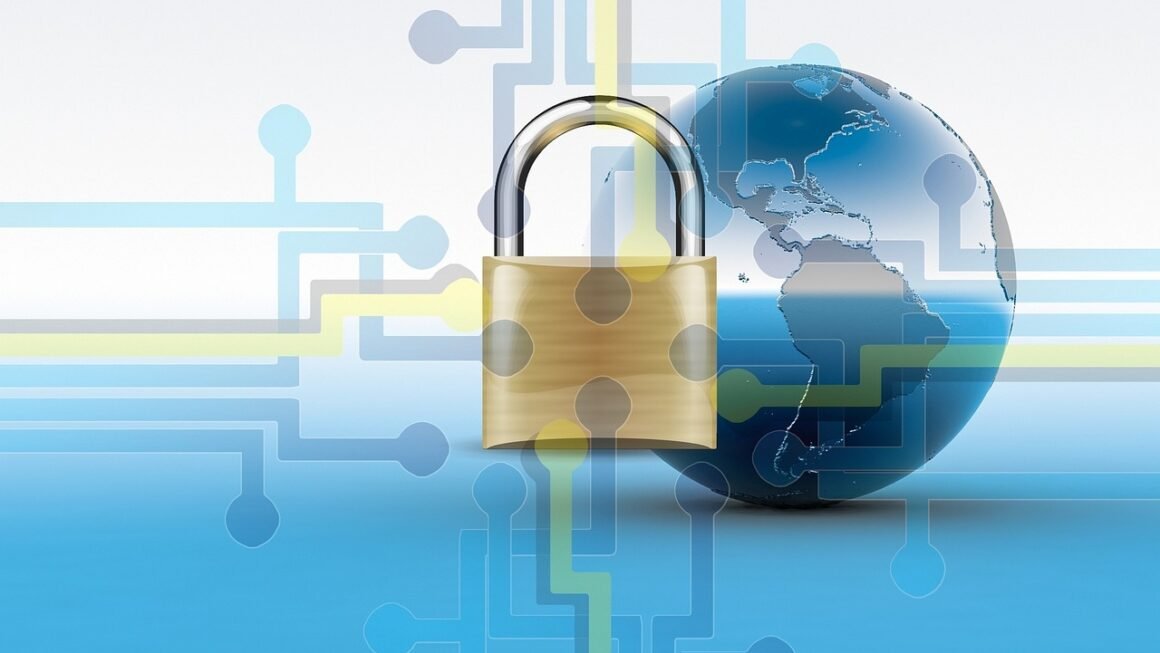Imagine discovering your bank account drained, a loan taken out in your name, or worse, a criminal record you never earned. This nightmare scenario is the reality for millions of people each year, victims of identity theft. In today’s digital age, where our personal information is constantly circulating online, understanding and protecting yourself from identity theft is more crucial than ever. This guide will provide you with the knowledge and tools to safeguard your identity and minimize your risk.
Understanding Identity Theft
What is Identity Theft?
Identity theft occurs when someone steals your personal information, such as your name, Social Security number, credit card details, or bank account information, and uses it without your permission to commit fraud or other crimes. This can range from opening fraudulent accounts to filing false tax returns.
Common Types of Identity Theft
- Financial Identity Theft: The most common type, where thieves use your information to access your bank accounts, open credit cards, or apply for loans.
Example: A thief obtains your credit card number and makes unauthorized purchases.
- Medical Identity Theft: Using your health insurance information to receive medical care, purchase prescriptions, or file fraudulent claims.
Example: Someone uses your insurance card to get a prescription for painkillers, potentially impacting your medical history.
- Government Documents and Benefits Fraud: Stealing your Social Security number or other government-issued IDs to claim benefits or avoid legal consequences.
Example: An individual uses your Social Security number to file a false tax return and claim a refund.
- Criminal Identity Theft: Posing as you to avoid arrest or prosecution for a crime.
Example: Someone arrested for drunk driving gives the officer your name and date of birth to avoid getting a DUI on their record.
Statistics and Impact
According to the Federal Trade Commission (FTC), identity theft is a widespread problem, affecting millions of Americans each year. In 2022, the FTC received over 5.7 million fraud reports, with identity theft being a significant portion of those cases. The financial and emotional impact of identity theft can be devastating, leading to:
- Damaged credit scores.
- Difficulty obtaining loans or mortgages.
- Time-consuming and stressful legal battles.
- Emotional distress and anxiety.
How Identity Thieves Obtain Your Information
Phishing and Scams
Phishing is a common tactic where criminals send fraudulent emails, text messages, or phone calls pretending to be legitimate organizations to trick you into revealing personal information.
- Example: You receive an email from “your bank” asking you to verify your account information by clicking on a link. The link leads to a fake website that steals your credentials.
- Tip: Always be wary of unsolicited emails or calls asking for personal information. Verify the sender’s legitimacy by contacting the organization directly through a known phone number or website.
Data Breaches
Data breaches occur when companies or organizations that store your personal information are hacked, and that information is stolen.
- Example: A major retailer suffers a data breach, exposing the credit card information of millions of customers.
- Tip: Stay informed about data breaches by monitoring news reports and signing up for breach notification services. Change your passwords regularly, especially for accounts that may have been compromised.
Physical Theft
Traditional methods like stealing wallets, purses, or mail still pose a risk.
- Example: A thief steals your wallet containing your driver’s license, credit cards, and Social Security card.
- Tip: Be mindful of your surroundings and protect your personal belongings. Shred any documents containing sensitive information before discarding them.
Unsecured Websites
Entering personal information on websites that are not secure (indicated by “http://” instead of “https://” in the URL) can expose your data to interception.
- Example: Making a purchase on a website that does not have SSL encryption can allow hackers to intercept your credit card information.
- Tip: Always ensure that websites you enter personal information on are secure, with a valid SSL certificate. Look for the padlock icon in the address bar.
Protecting Yourself from Identity Theft
Secure Your Financial Information
- Monitor your credit reports regularly: Obtain free credit reports from Equifax, Experian, and TransUnion annually through AnnualCreditReport.com. Look for any unauthorized accounts or suspicious activity.
- Be careful with your debit and credit cards: Don’t leave them unattended, and be aware of skimming devices at ATMs and point-of-sale terminals. Consider using virtual credit card numbers for online purchases.
- Secure your online accounts: Use strong, unique passwords for each account. Enable two-factor authentication (2FA) whenever possible.
- Shred sensitive documents: Shred any documents containing personal information, such as bank statements, credit card bills, and medical records.
Safeguard Your Personal Information Online
- Be cautious about sharing information on social media: Limit the amount of personal information you share on social media platforms. Avoid posting your full name, address, phone number, or birthdate.
- Use a VPN on public Wi-Fi: Public Wi-Fi networks are often unsecured, making them vulnerable to hacking. Use a virtual private network (VPN) to encrypt your internet traffic and protect your data.
- Install antivirus software and keep it updated: Protect your devices from malware and viruses that can steal your personal information.
- Be wary of suspicious emails and links: Do not click on links or open attachments from unknown senders. Verify the sender’s identity before providing any personal information.
Monitor Your Mail and Physical Documents
- Collect your mail promptly: Don’t let your mail sit in your mailbox for extended periods, as it could be stolen.
- Opt-out of pre-approved credit card offers: Reduce the amount of sensitive mail you receive by opting out of pre-approved credit card offers through OptOutPrescreen.com.
- Keep your Social Security card safe: Do not carry your Social Security card with you unless absolutely necessary. Store it in a secure location at home.
What to Do If You Become a Victim of Identity Theft
Act Quickly
The sooner you take action, the better your chances of minimizing the damage.
Contact Your Financial Institutions
- Report any fraudulent activity to your bank and credit card companies immediately.
- Close any accounts that have been compromised.
- Request new account numbers and cards.
File a Police Report
Filing a police report can help you document the crime and provide evidence for disputing fraudulent charges.
Place a Fraud Alert or Credit Freeze
- Fraud Alert: Place a fraud alert on your credit reports by contacting one of the three major credit bureaus (Equifax, Experian, or TransUnion). The alert will require creditors to take extra steps to verify your identity before opening new accounts.
- Credit Freeze: A credit freeze restricts access to your credit report, making it difficult for identity thieves to open new accounts in your name. You can place a credit freeze on each of your credit reports for free.
Report Identity Theft to the FTC
File a report with the Federal Trade Commission (FTC) at IdentityTheft.gov. The FTC provides resources and guidance for identity theft victims and can help you create a recovery plan.
Change Your Passwords
Change all your passwords, especially for financial accounts, email accounts, and social media platforms.
Conclusion
Identity theft is a serious crime that can have devastating consequences. By understanding the risks, taking proactive steps to protect your personal information, and knowing what to do if you become a victim, you can significantly reduce your vulnerability. Stay vigilant, stay informed, and protect your identity.



